What Do Raised Hackles in Dogs Mean?
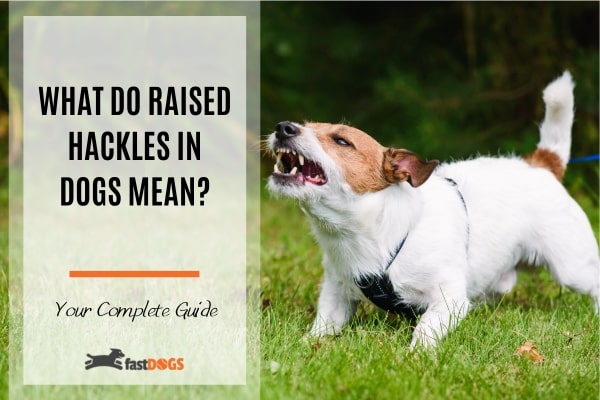
Raised Hackles in Dogs: What It Means and How To Deal With It
Raised hackles in dogs are pretty common, and something pet owners need to understand. When your pup’s hairs stand on end, they’re trying to tell you something — good or bad.
But, how do you know what they’re saying? What causes hackles to stand up? And, should you be concerned if they stand to attention too frequently?
To answer these questions and more, we’ve put together this guide.
What Are Dog Hackles?
Hackles are hairs that run along your canine’s spine, typically starting at the base of the head/neck and extending along the spinal area to the dog’s tail.
Dogs aren’t the only species to have hackles. Birds have them around their necks, which they often use to plump up their feathers and assert their dominance. Roosters often have brightly colored hackles or plumage they puff out to be louder to both the eye and the ear.
Perhaps the most well-known example of another animal with hackles, is the kitty cat. The “Halloween” image of a cat, with their fur standing on end as they arch their back to look larger, is the feline equivalent of raised hackles.
How Do Raised Hackles on a Dog Occur? Piloerection Explained
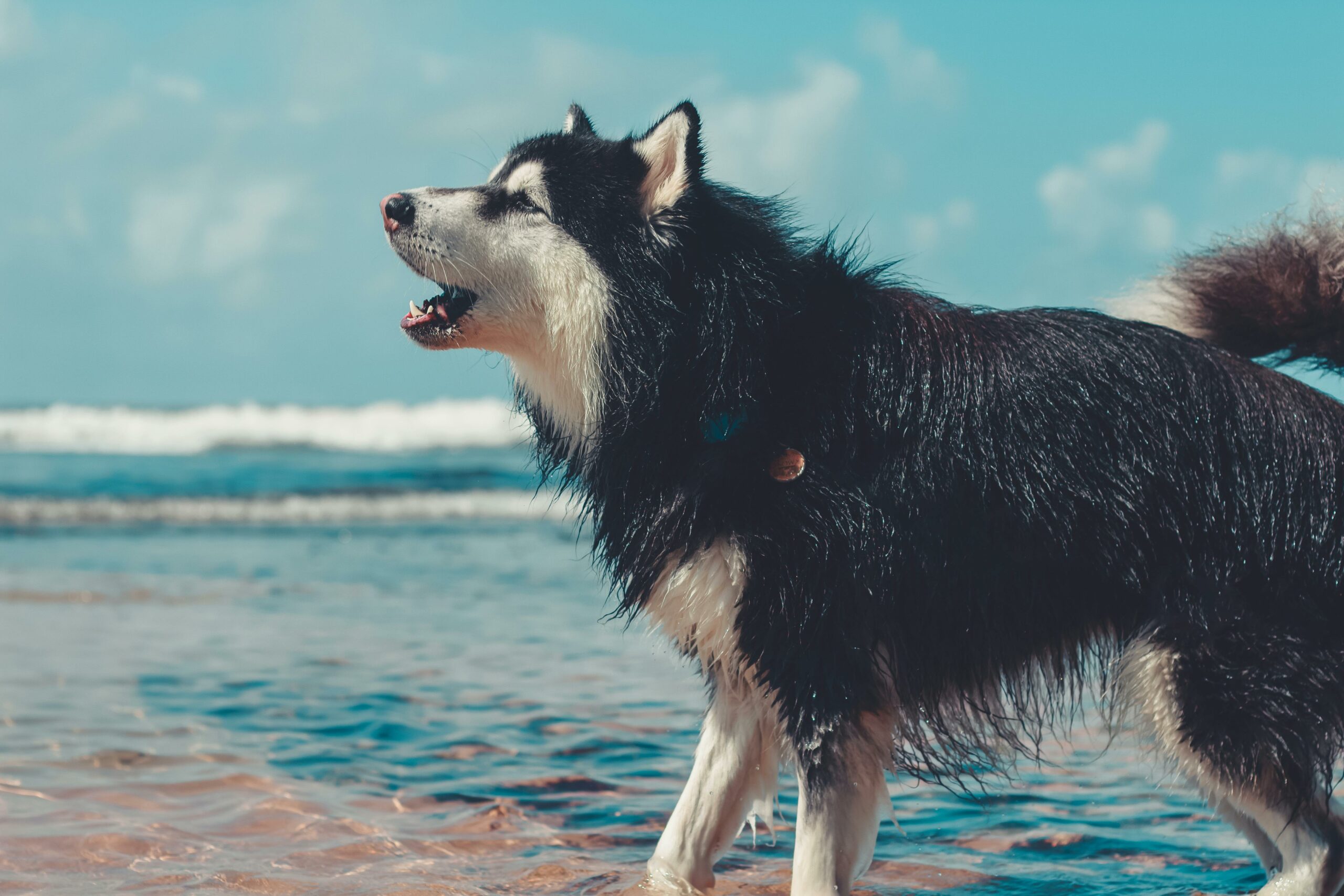
The raising of a dog’s hackles is an involuntary reaction, as in, they have no control over it. They’re pretty much like goosebumps on us humans. And, just like goosebumps, it’s the body’s fight-or-flight instinct taking over when a situation presents itself.
A dog hackles raised can be a sign of several reactions, including:
Excitement.
Anxiety.
Surprise.
Fear.
Aggression.
Defensive behavior.
The medical term for raised hackles is piloerection.
The bristling or hair rising along the spine is triggered by the nervous system, sending your dog into high alert. So, for example, it could be the sound of a doorbell ringing, coming into contact with another animal, or maybe even a loud bang.
These signals cause the arrector pili muscles to contract around the hair follicles on the spine, making them stand up, and the dog appears much larger. For other animals in the area, this can often be a visual warning the pup is ready to fight and stand their ground.
Different Raised Hackles in Dogs
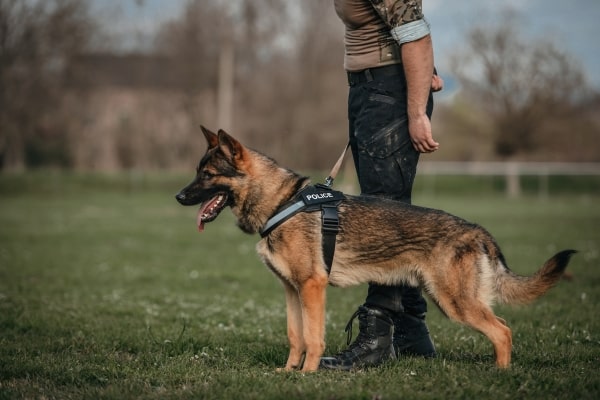
The visible locations of dog hackles, when piloerection occurs, can be a signal of a dog’s general temperament.
Hackles as a Sign of Confidence
Some dogs exhibit a thin line of follicles that run all the way down their back to their tail. In general, this pattern of hackles is associated with pups who have higher levels of confidence. Typically, they’re more likely to behave in an aggressive way than certain other pups
Hackles When Anxious

A smattering, or broad patch of fur, often up to eight inches in width, across the shoulders of a canine indicates a pup with lower confidence levels. Normally, when the dog hackles up, they will only be visible on about one-quarter or one-third of the length of the dog’s back. These dogs can often be fearful, with their raised hackles being a sign of anxiety.
Ambivalent Hackles and Unpredictability

The strangest hackles pattern is when a patch of hair is raised at the shoulder of the pup and the base of their tail, but no visible hackles in between. This can signify a more emotionally ambivalent pooch who is experiencing conflicted feelings. Their behavior will be less predictable, and they can be more reactive to external stimuli than many other dogs.
Do All Dogs Have Hackles?
Hackles are an important part of a dog’s defense mechanism, they allow them to appear taller, larger, and more intimidating to other animals (and humans too). Think of their hackles like the quills of a puffer fish, or porcupine, that stand up when they’re feeling threatened, or are trying to intimidate any predator.
Dogs with shorter hair or smoother coats, especially around the base of the head/neck region, tend to have more pronounced hackles. Although with other breeds, such as Poodles or Poodle mixes (think Labradoodle, Bernedoodle, or Goldendoodle), the hackles can be less noticeable due to their curly hair. Likewise, the hackles on fluffy dog breeds can be tricky to spot, because of all that fluff.5 Things Raised Hackles May Be Telling You
Most pet owners assume dog hackles up is a sign or warning of aggression, but it's important to recognize other situations. Remember, it’s an involuntary response, so there is always a stimulus involved, either real or perceived.1. Fear
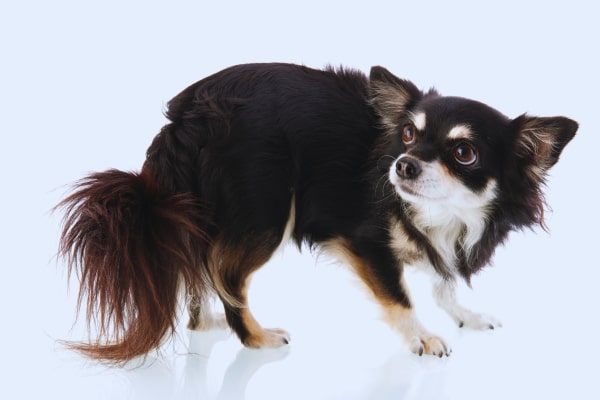
Dogs will exhibit raised hackles if they’re in fear or feel threatened by the presence of something. Think of it as the “stranger-danger” response.
This fear may arise from an encounter with another dog, where your pup feels intimidated or overwhelmed by the size or stature of the other canine (or any other larger animal). Small dogs typically raise their hackles when faced with a much larger breed.
Fear can also be of any loud noises, including fireworks or thunder, which your dog may not be accustomed to or expecting.
2. Surprise
A dog’s hackles can appear when your pooch is suddenly startled, such as when another dog or even a human jumps out suddenly. You may also notice your pooch’s tail retreats and hides between their back legs — another important body language sign your dog is feeling surprised or fearful.
3. Aggression

Raised hackles are often a sign of aggression, when a dog wants to show another pup or a stranger who is boss. This can even become apparent during dog training. A canine will raise their hackles to try to show who is the dominant partner in the process.
Furthermore, hackles can often move into the raised position when your dog is patrolling the yard and exhibiting signs of dog fence aggression.
Dominant or alpha dogs will growl with raised hackles visible if they think the other dog is not taking any notice of them or continues behaving in an excitable manner.
4. Insecurity
If there doesn’t appear to be any obvious reason why your pup is raising their hackles, it may be an indication they don’t feel secure in their current environment.
Perhaps something is unfamiliar in their environment, such as a new pet or baby being introduced to the family, or just because they feel uncertain about other recent changes, i.e., moving home.
5. Excitement

if your puppy hackles up when playing it can mean they’re extremely stimulated or excited — think of it as an adrenaline rush. A dog’s hackles raised when playing will often be combined with plenty of tail wagging, which just shows what a good time they’re having. It could even be the joy of catching a frisbee that causes your dog's hackles to rise.
Raised Hackles in Dogs and Other Body Language — Signs To Look Out For
Your dog's hackles being raised by themselves may not give away too much. However, when you look at other key body language, signs and cues can tell you more about how your furry friend is feeling.
Body language signs and cues include:
- Lip Licking — A dog licking their lips can often indicate anxiety or nervousness, especially if a dog is trying to be submissive. Dogs may also lick their lips to reassure or pacify other nearby animals, signaling that they pose no threat to them.
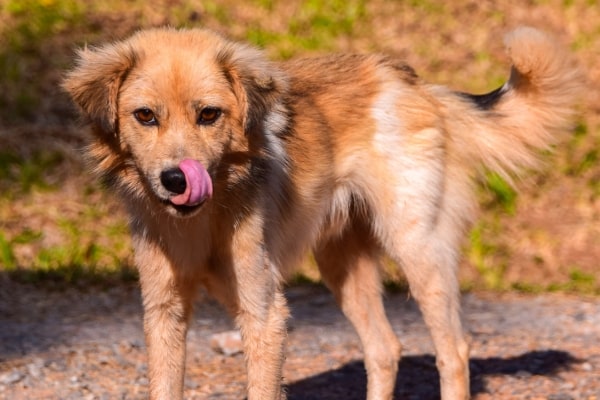
- Tail Wagging — While tail wagging is typically interpreted as a sign of a happy dog, it can also indicate that your canine companion feels threatened and is actively evaluating the present circumstances. When tail wagging is combined with raising of the hackles, it can point toward fearful aggression.
- Tucked-In Tail — Pups who feel nervous or vulnerable will often tuck their tail between their legs. Combined with raised hackles, this may show your pooch is frightened or anxious about something.
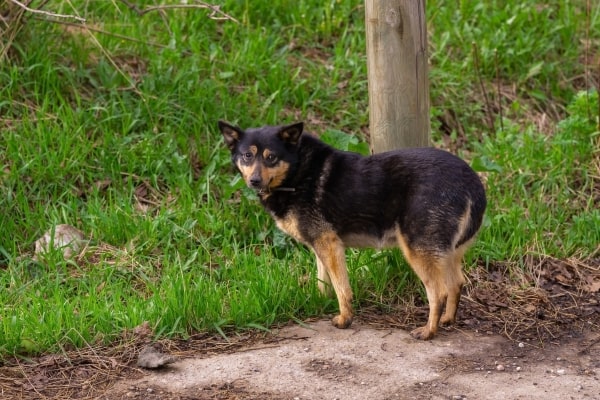
Ears Pricked Up — A sign of a confident canine, the ears being pricked up and hackles raised show a high level of alertness and taking an interest in their current surroundings.
Ears Folded Back — With a defensive posture, especially with their hackles raised, the ears retreating can be indicative that your pup is feeling fearful or unsure of their current environment.
Wide Eyes — Another sign, like pinned back ears, meaning that your pooch is feeling fearful or unsure of a current change in their situation and they’re in high alert mode.
Growling — When combined with hackles that are raised, growling can be your pup saying “back off!” Other signs they’re in defense mode may include baring their teeth, and a pup will normally emit short, loud barks repeatedly as a sign of aggression.
Excessive Sniffing — If your pooch starts sniffing around excessively while their hackles are raised, it’s likely down to external stimuli, such as the scent of other animals in the yard. Sometimes seen as being in a predatory mode, the hackles will rise while they search out any threat to their territory.
How To Deal With Raised Dog Hackles?
Don’t panic, dog hackles are completely natural. The most important thing is to try and recognize why your dog's hackles are raised. If your dog:
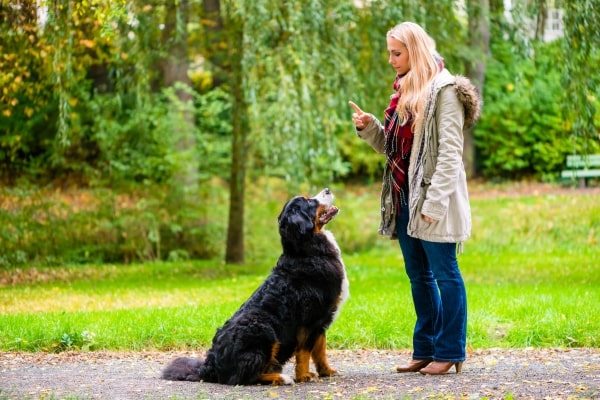
Seems Fearful
If you feel your dog’s raised hackles are a result of fear or a sudden shock, such as a loud noise, try to reassure your pooch and even trick the dog into thinking the loud noise was of your making and remove any perceived notion of threat. Don’t emphasize the sound by drawing more attention to the noise —“Ooh let’s go and see what that is.” You want to normalize the situation as quickly as possible.
Is Showing Signs of Aggression
If your canine companion raises their hackles when another animal or dog comes close, they’re simply in alert mode and being defensive of both you and themselves.
Growling, baring teeth, or letting out a series of defensive barks will no doubt cause the approaching dog/animal to become fearful, and either pooch may attack or snap.
Don’t ignore the raised hackles of either animal, after calling your pooch back and putting them safely on their leash, walk away. Remove your pooch from the situation and ensure they calm down. Try not to approach a dog from the rear while they are exhibiting signs of aggression, as they will feel trapped in all directions and may lash out.
Is Playing
If your dog's hackles appear raised as they play with other pups — don’t worry too much, they're just enjoying themselves and having fun. Providing there is no sign of aggression, there is nothing to be concerned about.
A playful hackles up dog may be trying to assert their dominance when playing with another pup. But, as long as the other dog owner doesn’t disapprove of the pup’s playfulness, leave them to it.
What if a Dog’s Hackles Up All the Time?
If a dog’s hackles are raised more often than usual, you could be dealing with underlying anxiety or fear.
Try to think if there have been any recent changes in your dog’s environment that may be causing your pup stress. It may be a newborn infant in the house, a new pet in the household or the neighborhood, or even a complete move of home.
Observe your pup for a time while trying to change any factors in the environment that may be causing them stress or giving them time to adjust to any unexpected changes.
Positive reinforcement, and ensuring they remain calm can help. However, if you’re worried about constantly rising hackles or signs of aggression, consult your local veterinarian, dog trainer, or a dog behavioral psychologist who may be able to help.
In very rare cases, some dogs may have raised hackles without external influence. Neurological diseases in some dogs can lead to the malfunctioning of the nervous system and the arrector pili muscles contracting without stimulation.Conclusion
If your pooch is showing signs of raised hackles, don’t panic, they’re completely natural and something that your dog has no control over. Every dog has them, but they can be more pronounced in some dogs.
While raised hackles in dogs don’t always mean aggression, don’t ignore the other signs. Try to figure out what’s causing your pooch’s hair to stand on end. By learning to recognize the cause you can hopefully help your pooch flatten out their neat coat quicker and lose that often scary appearance.Dogs With Raised Hackles FAQs
What Breeds Have Prominent Dog Hackles?
Rhodesian Ridgebacks are short-haired and look like their hackles are constantly raised. However, this is due to their hair growing in a forward motion along their spine rather than the length of the follicles.
What Does It Mean When a Dog’s Hackles Are Raised?
Raised hackles are an involuntary reaction of your pooch’s nervous system, often triggered by excitement, fear, anxiety, or aggression. The contraction of the arrector pili muscles in the skin below your dog’s follicles along their spine causes the hairs to stand up.
What Are Hackles Raised?
Otherwise known as piloerection, raised hackles are part of a canine’s fight-or-flight defense system. Hackles standing up can make the dog appear larger, and act as a visual warning to other animals.
What Do Raised Hackles Look Like?
If a dog is highly stimulated or aroused, hackles can appear as a line of hair that stands upright from the neck to the base of the tail. However, there are no consistent patterns that relate to any particular behavior. Other signs, such as body language, can give more clues to the trigger of the dog hackles raising.
Do Dog Hackles Raise While Sleeping?
Yes, dogs can respond to stimuli while sleeping by raising their hackles. It may be that your pooch is naturally stimulated by vivid dreams, just like we humans are on occasion.
You should be careful not to wake a sleeping dog when their hackles are raised, as it may be the result of a bad dream where they’re frightened or feel threatened. Waking a dog with raised hackles or any other signs of aggression (i.e., growling, baring of the teeth) could lead to the person stirring them getting bitten.
How Do Dogs Control Their Hackles?
Dogs can’t. It’s an involuntary movement caused by the central nervous system.
